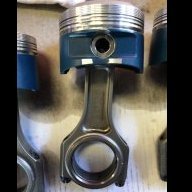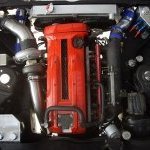Announcements
-
Similar Content
-
Latest Posts
-
The car remains in paint jail. I am now pretty convinced that the whole "RB25 Airboxes are kinda limiting to ~300kw" could be a thing. Also saw a good video from Engine Masters: (Sorry for FB link) (https://www.facebook.com/watch/?ref=search&v=761771519471924&external_log_id=c10bcbb6-2c39-4ff3-9240-287e9921fde6&q=Cold Air Considerations) Where they tested Pod Filter sizes and kept adding bends to a LS3 on an Engine Dyno to find if bends caused power loss. It's a good video worth watching - They did lose ~25hp from making an intake which had 3x90's and a 120 degree. They only lost maybe 1hp with a basic 90. I feel that by sealing up my airbox I have: 1) Created the same restriction a stock airbox would have. 2) Created a very convoluted set of intake 'pipes' by forcing all the air through the ducts. So I am pretty confident I'll be going full circle and have a huge hot air intake pod and actually see a benefit. The air does *not* stay hot once it gets flowing, aided by the ducts, and the pod can then pull air from anywhere. All the posts of yore talk about the stock airbox costing 10-15kw at 300kw+ but you know what? I f**king would very much like that 10-15kw and I remember my own pod filter in engine bay experiences. Turns out the GTT Reo and Headlight brackets really don't allow you to mount GTR items, no matter what the internet says. Various brackets have had to be made up to actually make it fit right for the front bar. Also some idiot mounted a 3L Accusump right where the bumper wants to go, so that has had to be 'relocated' To where, I am still not sure, but it's supposedly mounted in the pictures and I can't see it.
-
Sounds like the oil pressure light is wired into the oil temp sensor... As it warms up, resistance on temp sensor reduces, hence more current can flow and the dash light gets brighter.
-
Got the front subframe and suspension in.
-
By Dose Pipe Sutututu · Posted
If it's cold in summer, then no issue. If it's cutting out every few seconds and you're not reaching your target temp, then there's an issue. One could be the pressure switch and the other issue could be the temp probe inside the evaporator.
-








Recommended Posts
Create an account or sign in to comment
You need to be a member in order to leave a comment
Create an account
Sign up for a new account in our community. It's easy!
Register a new accountSign in
Already have an account? Sign in here.
Sign In Now